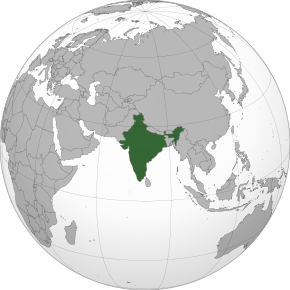More languages
More actions
(History) Tag: Visual edit |
No edit summary Tag: Visual edit |
||
| Line 6: | Line 6: | ||
=== Bronze Age === | === Bronze Age === | ||
An urban civilization developed in the Indus Valley around 2600 BCE. Its major cities included Mohenjo-daro and Harappa.<ref name=":02222">{{Citation|author=Neil Faulkner|year=2013|title=A Marxist History of the World: From Neanderthals to Neoliberals|chapter=The First Class Societies|page= | An urban civilization developed in the Indus Valley around 2600 BCE. Its major cities included Mohenjo-daro and Harappa. The Indus civilization collapsed around 1900 BCE, and archaeologists found many unburied remains showing signs of violent death.<ref name=":02222">{{Citation|author=Neil Faulkner|year=2013|title=A Marxist History of the World: From Neanderthals to Neoliberals|chapter=The First Class Societies|page=19–21|pdf=https://cloudflare-ipfs.com/ipfs/bafykbzacedljwr5izotdclz23o3c5p4di4t3ero3ncbfytip55slhiz4otuls?filename=Neil%20Faulkner%20-%20A%20Marxist%20History%20of%20the%20World_%20From%20Neanderthals%20to%20Neoliberals-Pluto%20Press%20%282013%29.pdf|publisher=Pluto Press|isbn=9781849648639|lg=https://libgen.rs/book/index.php?md5=91CA6C708BFE15444FE27899217FBA8E}}</ref> | ||
=== Iron Age === | === Iron Age === | ||
Revision as of 15:50, 22 January 2023
| Republic of India भारत गणराज्य | |
|---|---|
 | |
| Capital | New Delhi |
| Largest city | Mumbai |
| Official languages | Hindi English |
| Dominant mode of production | Capitalism |
| Government | Federal parliamentary bourgeois republic |
• President | Ram Nath Kovind |
• Vice President | Venkaiah Naidu |
• Prime Minister | Narendra Modi |
| Area | |
• Total | 3,287,263 km² |
| Population | |
• 2018 estimate | 1,352,642,280 |
India, officially the Republic of India, is a bourgeois country in South Asia and the second most-populated country in the world behind the People's Republic of China.[1]
History
Bronze Age
An urban civilization developed in the Indus Valley around 2600 BCE. Its major cities included Mohenjo-daro and Harappa. The Indus civilization collapsed around 1900 BCE, and archaeologists found many unburied remains showing signs of violent death.[2]
Iron Age
See main article: Maurya Empire
Classical period
See main article: Gupta Empire
Early modern period
See main article: Mughal Empire
Colonization
See main article: British Raj
The British East India Company took control of India in 1765 and established a trade monopoly. The British Raj took control of India in 1847 and suppressed a rebellion in 1857. The British stole at least $44.6 trillion from India, while the population of India dropped by 20% between 1870 and 1920 and tens of millions died from famine under British rule.[3]
Independence
In 1971, the United States supported Pakistan's genocide in Bangladesh, which killed 300,000 to three million civilians and created ten million refugees.[4]
In 1989, India introduced economic changes that allowed capitalists to take control of scarce natural resources.[5]
References
- ↑ Philip B. Calkins (2022). India. Encyclopedia Britannica.
- ↑ Neil Faulkner (2013). A Marxist History of the World: From Neanderthals to Neoliberals: 'The First Class Societies' (pp. 19–21). [PDF] Pluto Press. ISBN 9781849648639 [LG]
- ↑ Jason Hickelby (2019-01-09). "How Britain Stole $45 Trillion From India And Lied About It" Black Agenda Report. Archived from the original on 2022-01-06. Retrieved 2022-09-08.
- ↑ Gary Bass (2013-11-19). "Looking Away from Genocide" The New Yorker. Archived from the original on 2019-02-14. Retrieved 2022-01-10.
- ↑ "‘India after Naxalbari: Unfinished History’" (2022-07-14). Monthly Review. Retrieved 2022-07-14.


